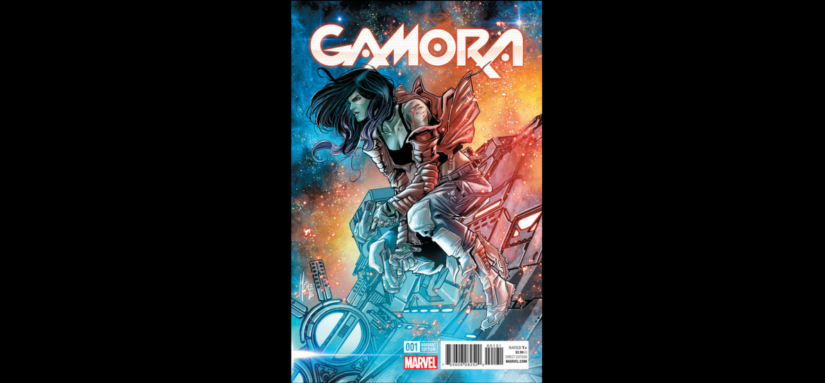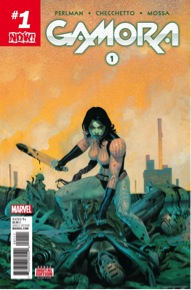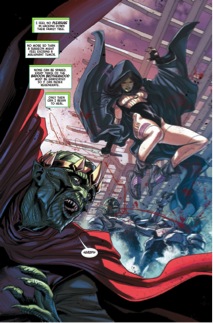James Gunn often gets praised as a visionary director and writer for what he did on Guardians of the Galaxy. He deserves every bit of that praise and more. Someone who does not get their due credit, from what I’ve seen, is Nicole Perlman, who co-wrote the screenplay. Now, I know that often directors and subsequent writers will change a bunch that was in an original script – that’s a given. However, it didn’t sit right that, wherever I looked, I didn’t see any of the copious praise for the movie in my newsfeed being sent Perlman’s way as well. With that in mind, I was excited to see that she would be launching Gamora at Marvel as an ongoing series. We were finally going to get a chance to see exactly how Perlman handles a Guardian of the Galaxy on her own.
I’m a bit behind, but I just dove into the issue. It’s written by Perlman with art by Marco Checchetto, colors by Andres Mossa, and letters by Travis Lanhman. The first arc is titled Momento Mori, an interesting play on the phrase by which writers like myself whose work is powered as much by existential dread as it is by coffee live. The story takes place in the past – 260 lunar orbits ago to be exact – and follows Gamora at a time when she was reluctantly running with Thanos, who is obsessed with her and her power, and Nebula, who wants to kill the crap out of her. Because the other Guardians solo series have been set in the present, I expected this to move back and forth between this flashback and current chronology, but instead it stays firmly in this era. I’m not sure if this is going to be how the entire arc or even the whole Gamora ongoing plays out, but it works for this issue.
Perlman’s writing is engaging, mixing high drama and action with sibling bickering. Gamora attacks the Badoon royalty in hopes for revenge-fueled catharsis, none of which comes, but yet her battle prowess and Thanos’s abuse leads Nebula to bring her own feud with Gamora to a head. There is clever dialogue throughout, but it’s never funny like the film, and I think it purposely makes that distinction. This is a darker time in Gamora’s life with Game of Thrones-esque revenge plots and goals no less than genocide on our protagonist’s mind. It’s dark and nasty without tapping into that gritty-for-the-sake-of-gritty thing that superhero comics have been criticized for these past few years.
Checchetto’s art is hyper-detailed – some of the most intricate linework I can remember seeing. Mossa’s colors compliment the work well, allowing the focus characters to stand out in Checchetto’s landscape of densely rendered palaces and group scenes. When I’m writing comics, I always feel a bit bad for writing group scenes, imagining how long it would take the artist – and I’m feeling some second-hand carpal tunnel in my own hands for Checchetto, whose huge groups of peripheral characters receive as much detail as Gamora in a splash page. It’s incredible.
Gamora is off to a terrific start with a fast-paced script, an ongoing story with a great deal of potential, and absolutely awesome art. I’m in for the ride.





Comments are closed.